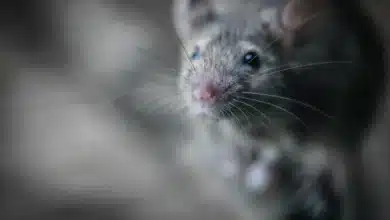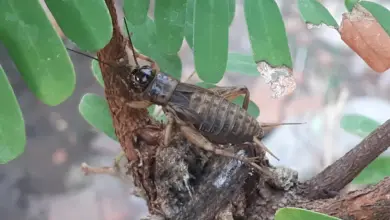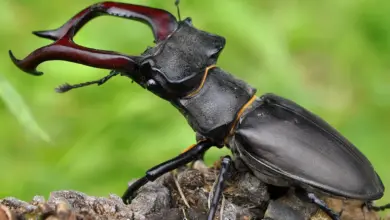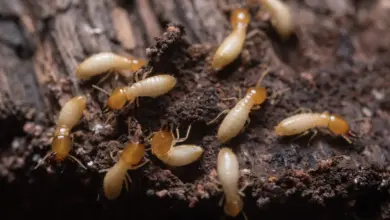Antlions are fascinating creatures with a unique life cycle. You might have come across their larvae, also known as “doodlebugs,” in sandy or dusty areas. But have you ever wondered what feeds on these intriguing insects?
Adult antlions resemble delicate, drab damselflies with intricately veined wings and elongated bodies. While the adult stage is relatively safe, their larvae form an essential part of the food chain. In their larval stage, they build cone-shaped pits to trap prey, but they themselves also fall prey to various animals.
Predators of antlion larvae include birds, reptiles, amphibians, and other insects. These creatures find nourishment in the protein-rich larvae and keep the antlion population in check. Stay tuned as we delve deeper into the natural world of antlions and their predators.
[ez-toc]
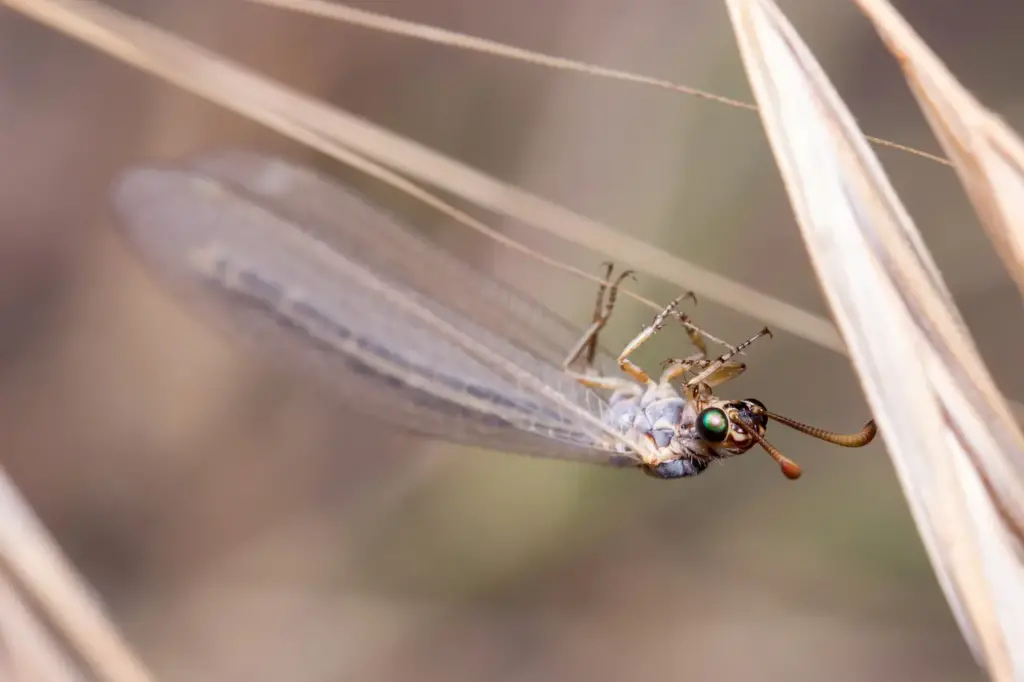
Understanding Antlions
Antlions belong to the family Myrmeleontidae and are part of the order Neuroptera within the animal kingdom. These unique insects have a fascinating life cycle and play an essential role in their ecosystems. To help you get familiar with antlions, let’s discuss their features, diet, and predators.
Antlions display some key characteristics:
- Larval stage: The young antlions are oval, plump, flattened, and soft-bodied with mottled and dirt-colored appearance, often with bristles 1.
- Adult stage: Larger than larvae, adult antlions resemble drab damselflies. They have an elongated body, four intricately veined wings mottled with browns and black, and clubbed or curved antennae 1.
As predators, antlions have a unique way of hunting. In their larval stage, they create conical pits in dry, sandy soil to capture prey like ants 2. Adult antlions mostly feed on other insects and play a key role in controlling pest populations 3.
Now, let’s explore what preys on antlions. Insects and spiders form part of the diet of antlions, which in turn become prey to various predators within the food web. These predators include birds, larger insects, and small mammals. As part of the intricate ecosystem balance, these predators control antlion populations while maintaining a healthy, functioning food web4.
In conclusion, understanding antlions within the context of their ecosystem provides valuable insights into their unique features, diet, and natural predators. They play a crucial role in keeping insect populations in check.
Physical Characteristics of Antlions
Larval Form and Features
Antlions, also known as doodlebugs, are fascinating creatures with a two-stage life cycle. In their larval form, they have an oval, plump body with a flattened, segmented abdomen. Their six legs allow them to move around, but their most noticeable feature is their large, sickle-like mandibles. These jaws are designed for capturing and eating prey, like ants and other small insects 1.
Some key larval features include:
- Mottled, dirt-colored body with bristles
- Sickle-like jaws, often with spines
- Commonly found in sandy or loose soil
Adult Form and Features
Once antlions undergo metamorphosis, they become adults with a different set of features4. Their adult form is often compared to damselflies, as they possess wings and clubbed antennae. The adult spotted-winged antlion, for example, has a wingspan of around 1.5 inches, allowing them to fly in search of food and mates3. Adult antlions still possess two body segments, the head and the abdomen.
Key adult features are:
- Drab-colored wings, often with spots
- Clubbed antennae
- Predatory on other insects
In summary, antlions exhibit unique physical characteristics in both their larval and adult forms. Their larval stage is mainly characterized by their distinctive sickle-like jaws, while adult antlions have wings and clubbed antennae. By understanding these features, you can better appreciate the amazing world of these insects!
Antlion Habitats
Antlions are fascinating creatures that can be found in various habitats around the world. They are most commonly found in dry, sandy environments where they can create their unique funnel-shaped traps in the soil.
In North America, antlions can be found in states like Arizona and Florida, where the climate supports their preferred habitats. They thrive in sandy soil, which is often found in desert regions and along beaches. Similarly, antlions inhabit sandy habitats in Europe, where they can be found near coastal areas.
When considering antlion habitats, keep in mind these key features:
- Dry environments
- Sandy soil
- North American states like Arizona and Florida
- European coastal areas
- Beaches
If you ever come across these creatures, marvel at their trapping techniques, and remember that they play an essential role in maintaining the balance of ecosystems in these regions.
Feeding and Hunting Techniques
Constructing Traps
Antlions, fascinating ambush predators, employ a unique technique in constructing their traps. They build funnel-shaped pits in sandy areas, which serve as their primary hunting ground. Here’s how they do it:
- They use their heads to make circular movements, moving the sand outwards.
- They continue this process until the pit reaches the desired depth with steep walls.
These pits are cleverly designed, ensuring that their prey, usually ants and other small insects, find it challenging to escape. The steep walls cause an avalanche effect whenever prey tries to climb out, leading to their capture.
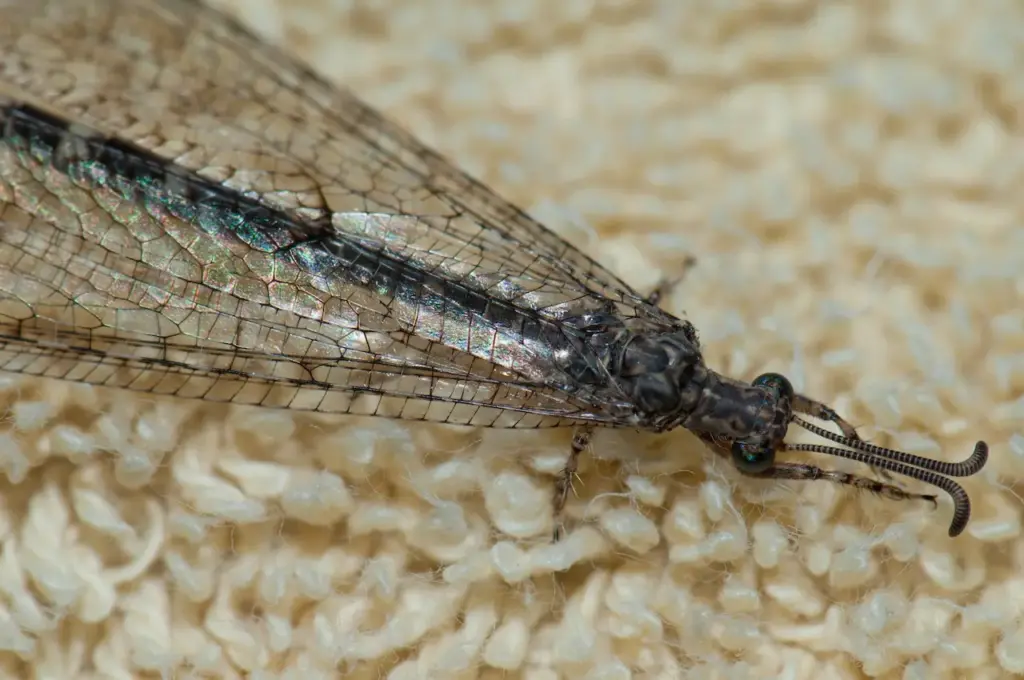
Ambush Predatory Techniques
When it comes to hunting, antlions use camouflage and overhangs to remain hidden beneath the sand at the bottom of their pits, leaving only their jaws visible. Once an unsuspecting insect falls into the trap, the antlion swiftly grabs and devours it. Some key features of their predatory techniques include:
- Lying in wait for prey to fall into their trap
- Using their specialized jaws to grasp prey tightly
- Injecting venom and digestive enzymes to consume their prey
Here is a comparison table of antlion trap construction and ambush predatory techniques:
| Trap Construction | Ambush Predatory Techniques |
|---|---|
| Funnel-shaped pit | Camouflage |
| Steep walls causing avalanches | Overhangs to hide beneath the sand |
| Circular movements for digging | Swift grasping of prey using jaws |
| Suitable for capturing small prey | Venom and digestive enzymes for consumption |
By employing these techniques, antlions efficiently catch and consume their prey, making them one of the most unique and skilled ambush predators in the insect world.
Antlion’s Prey
In the world of insects, antlions are fascinating creatures with some interesting feeding habits. Known for their distinct larvae stage, antlions are hungry predators that prey on various small insects.
One of the most common prey for antlions is, unsurprisingly, ants. They’re particularly skilled at capturing and devouring unsuspecting ants that come their way. You’ll often find antlions showing interest in insects like bugs, flies, and crickets too.
When in the mood for something different, antlions may also go after small insects such as mites. An occasional snack of fire ants might add a little excitement to their diet as well. These predators generally target pests that may cause problems for us, so in a way, they are providing a form of natural pest control.
Just to give you an idea of their preference for prey, here’s a comparison table:
| Prey | Preference |
|---|---|
| Ants | High |
| Insects | Medium |
| Bugs | Medium |
| Flies | Medium |
| Small Insects | Low |
| Crickets | Medium |
| Mites | Low |
| Fire Ants | Low |
| Pests | Medium |
In summary, antlions have a diverse palate, preying on ants and various other insects and pests. Their predatory behavior offers some benefits for our ecosystem, so if you spot them in your garden, they might be doing you a favor by tackling some unwanted pests.
Antlion Predators
Bird Predators
Many bird species prey on antlions, including those that feed on insects found in wooded or grassland areas. Some examples of bird predators include:
- Swallows
- Martins
- Flycatchers
Birds can easily snatch antlions from the ground or even catch them in mid-air.
Arachnid Predators
Spiders are another group of predators with a taste for antlions. For instance, jumping spiders are known for their ability to capture insects like antlions. Spiders stalk, pounce, or weave webs to trap their prey. Examples of spider predators include:
- Wolf spiders
- Orb-weaver spiders
- Crab spiders
Mammal Predators
Mammals, particularly small mammals, are also known to consume antlions. Some of these predators rely on their keen sense of smell and hearing to locate insects like antlions. Notable mammal predators that could prey on antlions are:
- Anteaters
- Lizards
- Amphibians
While humans don’t typically eat antlions, they may indirectly influence the population by controlling the environment in which they live or using pesticides on plants inhabited by antlions.
Pros and cons of predators in controlling antlion populations:
Pros:
- Natural control method
- Reduces the need for pesticides
Cons:
- May be less efficient in controlling large populations
- Predators may also consume other beneficial insects
| Predator Type | Examples | Prey Capture Method |
|---|---|---|
| Birds | Swallows, Martins, Flycatchers | Aerial capture, ground foraging |
| Arachnids | Jumping spiders, Wolf spiders, Orb-weaver spiders | Stalking, pouncing, web weaving |
| Mammals | Anteaters, Lizards, Amphibians | Smell, hearing, foraging |
As you can see, various types of predators play a role in controlling antlion populations. Each has their own unique methods of hunting and capturing the insects, contributing to the overall balance of the ecosystem.
Antlion Lifecycle and Metamorphosis
Antlions undergo a fascinating transformation during their lifecycle. Let’s take a closer look at their metamorphosis process, which includes the cocoon, pupal stage, adult stage, and metamorphosis itself.
In the beginning, antlions go through the larval stage. This is when they create their well-known funnel-shaped pits to trap ants. As they grow and develop, antlions eventually encase themselves in a cocoon1. This is a crucial step in their transformation:
- Cocoon is made of silk and sand particles
- Serves as protection during metamorphosis
After forming the cocoon, antlions enter the pupal stage4. This stage is marked by significant changes in their physical appearance and features:
- Antlions remain immobile
- Body structures are reorganized
- Lasts approximately 1-3 weeks
Once the pupal stage is complete, antlions emerge as adults3. Adult antlions look quite different from their larval form, resembling drab damselflies:
- Elongated body and four veined wings
- Clubbed or curved antennae
- Larval predatory behavior is lost
The entire process, from larva to adult, is collectively known as metamorphosis2. This remarkable transformation allows antlions to adapt and thrive in their environment.
To sum up, the antlion lifecycle and metamorphosis play crucial roles in the development and survival of these unique insects. Remember the cocoon, pupal stage, adult stage, and the overall process of metamorphosis as you explore their fascinating world.
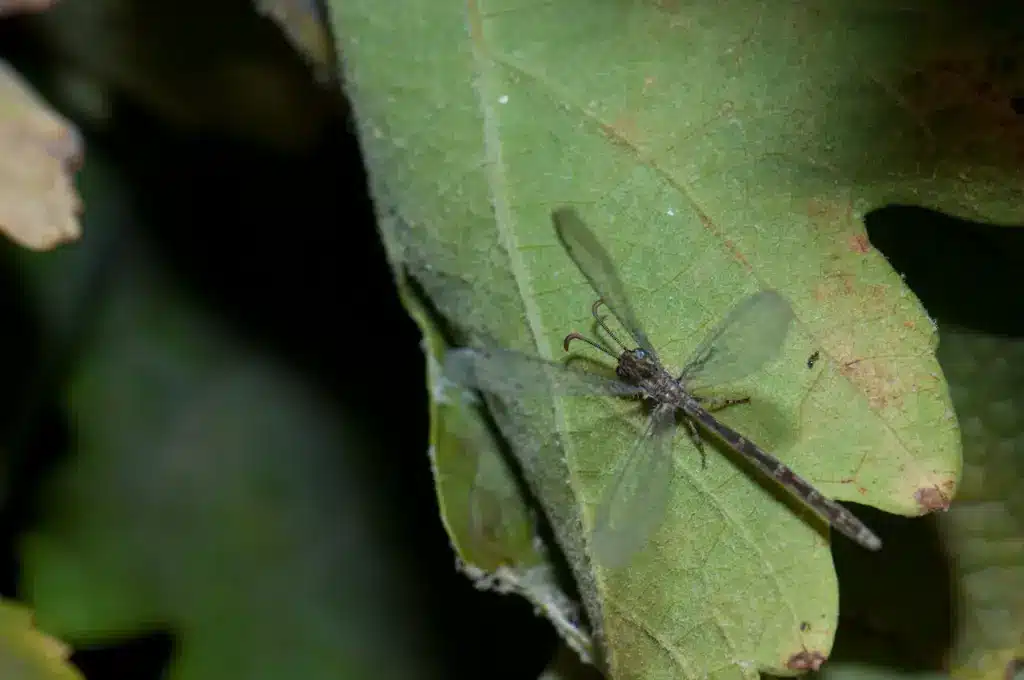
Interactions with Humans
Regarding antlions, you might be curious about their interactions with humans and their potential status as pests. It’s important to understand the nature of these creatures to assess their influence on our lives.
Antlions, as insects, can often be found in sandy or loose soil areas, where they build their characteristic funnel-shaped traps. These traps help them catch small insects, particularly ants, which serve as their primary food source. Although they specialize in preying on insects, they do not pose any direct threat to humans.
In fact, many people find antlions fascinating for their unique predatory behavior and might even observe or study them out of interest. Additionally, there is no evidence to suggest that antlions pose any harm or challenge to human health or property.
Given their preference for feeding on ants, you might consider antlions beneficial in controlling certain ant populations, especially in gardens or other outdoor spaces. By reducing the number of ants around your home or garden, antlions could potentially help in managing some common garden pests.
In conclusion, antlions have no adverse impacts on humans and can even provide some minor benefits in controlling ant populations. So, there’s no need to worry about your interactions with these intriguing insects
